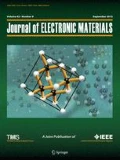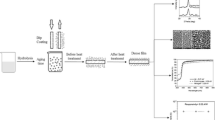Abstract
We report the photoconductance of ZnO thin films obtained from thermally treated ZnS films grown by a chemical bath deposition method. The measurements of photo-conductance were performed in an atmosphere of air or nitrogen (N2) at different temperatures between 300 K and 375 K. The augmented conductance after ultraviolet (UV) irradiation (330–380 nm) in air fades away slowly to its original value, whereas in a nitrogen atmosphere, a significant part of the augmented conductance remains. Measurements of electrical conductance as a function of temperature in N2 or air, in the dark or the light, seem to indicate that the donor concentration is increased during the UV irradiation, suggesting that oxygen vacancies and interstitials are created. An alternative model for the photoconduction in ZnO is proposed in which the slow increase of conduction during irradiation is explained by an increase of donors instead of photoelectrons. In this model, the photoelectrons would only play a role in the mechanism of the creation of donors.
Similar content being viewed by others
References
F.D. Auret, J.M. Nel, M. Hayes, L. Wu, W. Wesch, and E. Wendler, Superlattice Microstrut 39, 17 (2006).
C.R. Gorla, N.W. Emanetoglu, S. Liang, W.E. Mayo, Y. Lu, M. Wraback, and H. Shen, J. Appl. Phys. 85, 2595 (1999).
Y. Ma, W.L. Wang, K.J. Liao, and C.Y. Kong, J. Wide Bandgap Mater. 10, 113 (2002).
P. Sharma, K. Sreenivas, and K.V. Rao, J. Appl. Phys. 93, 3963 (2003).
S. Kumar, V. Gupta, and K. Sreenivas, Nanotechnology 16, 1167 (2005).
S.A. Studenikin, N. Golego, and M. Cocivera, J. Appl. Phys. 87, 2413 (2000).
Q. Wan, Z.T. Song, W.L. Liu, C.L. Lin, and T.H. Wang, Nanotechnology 15, 559 (2004).
C. Cruz-Vázquez, F. Rocha-Alonzo, S.E. Burruel-Ibarra, M. Barboza-Flores, R. Bernal, and M. Inoue, Appl. Phys. 79, 1941 (2004).
D.C. Look, D.C. Reynolds, J.R. Sizelove, R.L. Jones, C.W. Litton, G. Cantwell, and W.C. Harsch, Solid State Commun. 105, 399 (1998).
T. Edahiro, N. Fujimura, and T. Ito, J. Appl. Phys. 93, 7673 (2003).
C. Pengfei, L. Shengtao, Z. Le, and L. Jianying, Appl. Phys. Lett. 93, 012902 (2008).
Y. Kayanuma, Defect Processes Induced by Electronic Excitation in Insolaters, vol. 2, ed. N. Itoh (Singapore: World Scientific, 1989), p. 12.
K.S. Song and R.T. Williams, Self-Trapped Excitons, Chapters␣1, 5, 6 (Berlin, Springer, 1996).
Y. Yan, M. Al-Jassim, and S.H. Wei, Phys. Rev. B. 72, 161307(R) (2002).
H. Geistlinger, J. Appl. Phys. 80, 1370 (1996).
W.H. Press, B.P. Flannery, S.A. Teukolsky, and W.T. Vetterling, Numerical Recipes, vol. 15 (Cambridge: Cambridge University press, 1990).
L. Salmon and D.V. Booker, Report No. AERE-R 7129, (Harwell Laboratory, Oxfordshire, 1972).
Acknowledgement
We acknowledge the technical support of J. C. Avila-Barrera and M. Atondo-Encinas. All figures␣and most of our analyses were made with the computer program Origin 6.1 from OriginLab Corporation. This work was supported by Project: PICA 05/DCEN01 (Universidad de Sonora).
Author information
Authors and Affiliations
Corresponding authors
Rights and permissions
About this article
Cite this article
Burruel-Ibarra, S.E., Cruz-Vázquez, C., Bernal, R. et al. Study on the Conductance and Photo-Conductance of ZnO Thin Films at Different Temperatures in Air and N2-Atmosphere. J. Electron. Mater. 45, 771–778 (2016). https://doi.org/10.1007/s11664-015-4199-1
Received:
Accepted:
Published:
Issue Date:
DOI: https://doi.org/10.1007/s11664-015-4199-1




